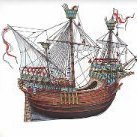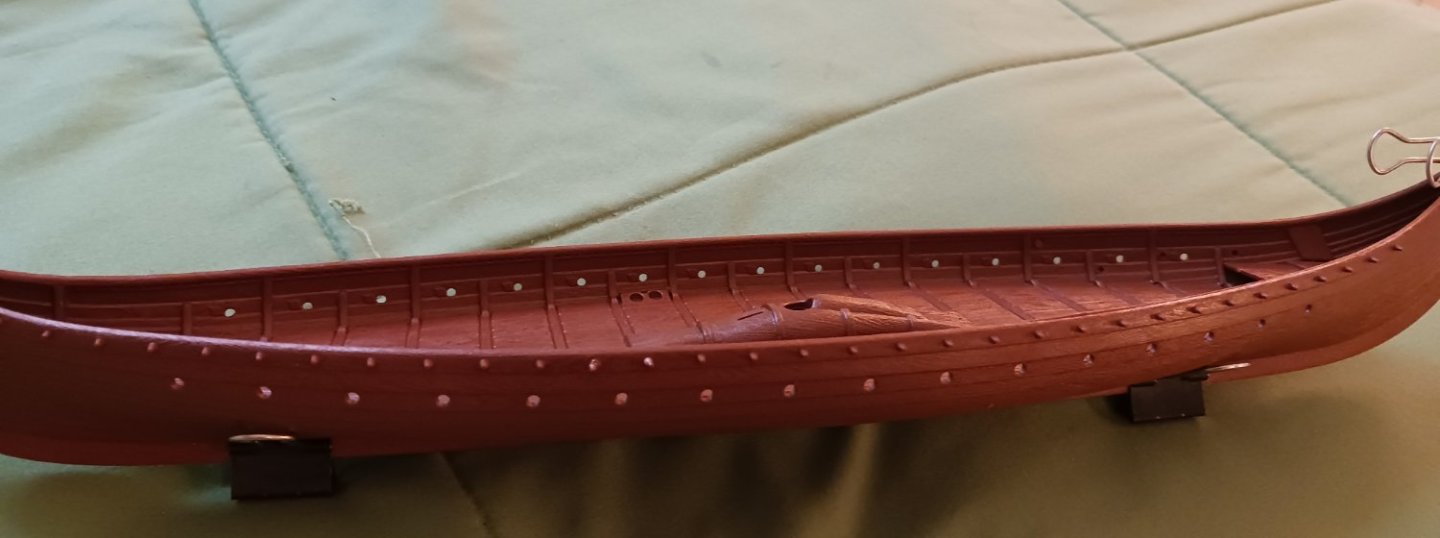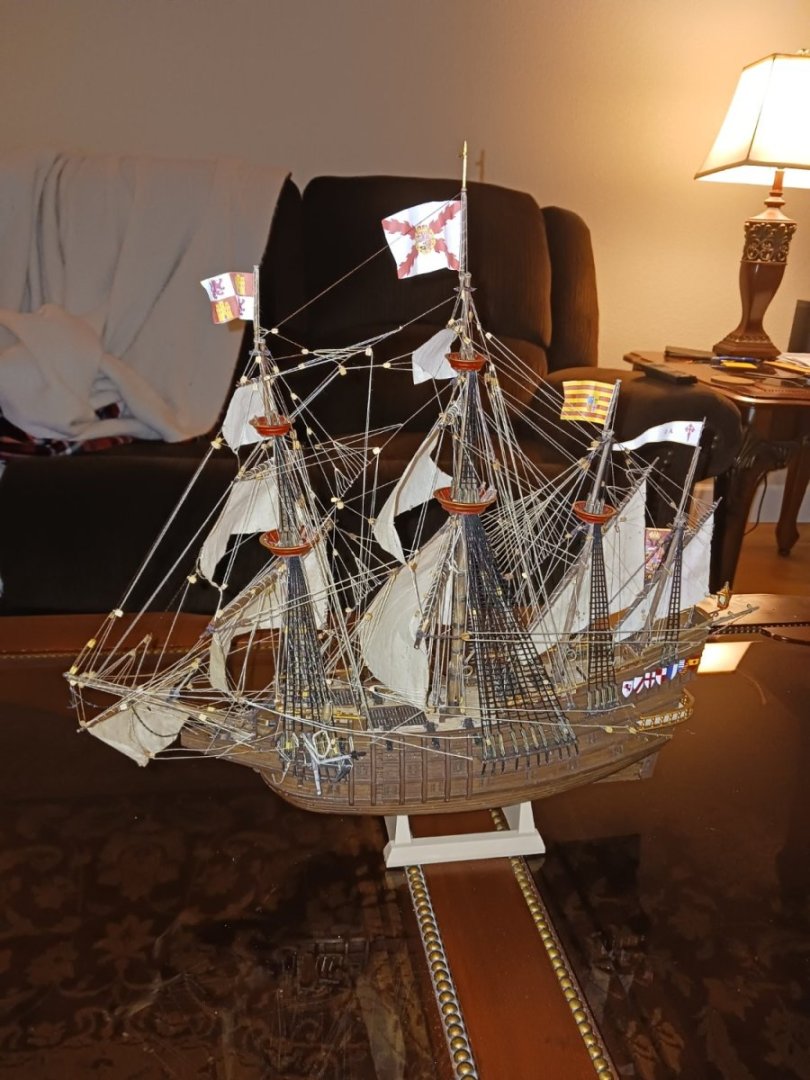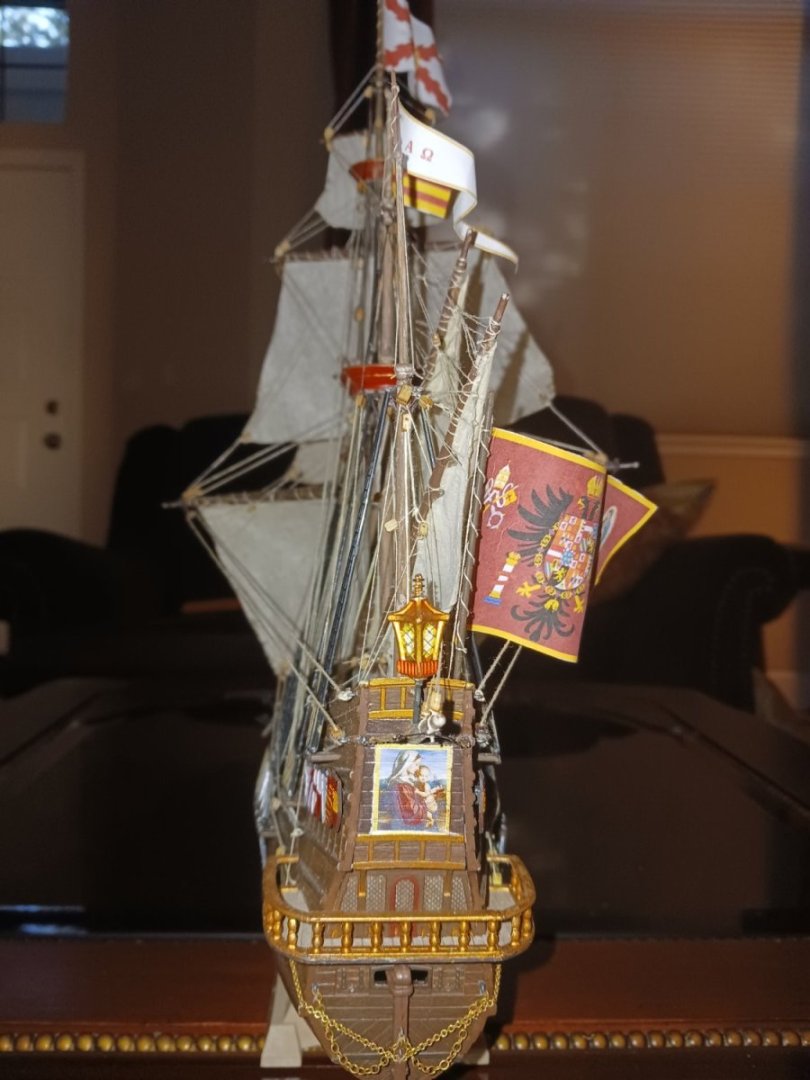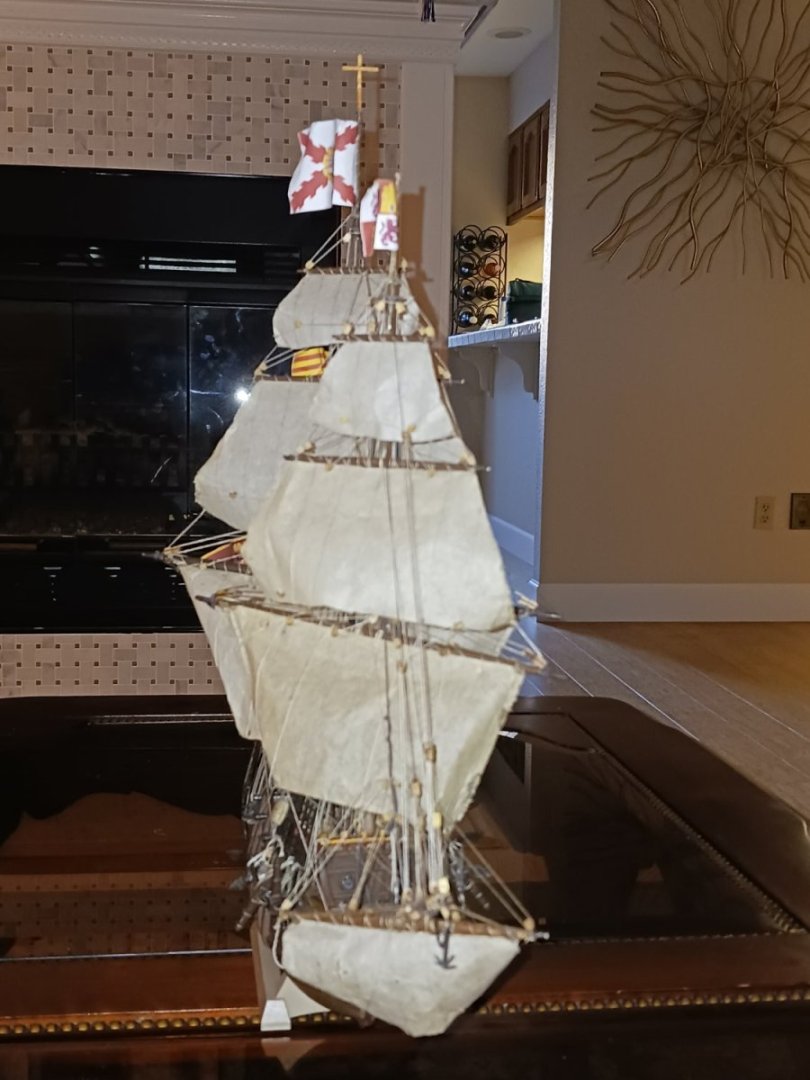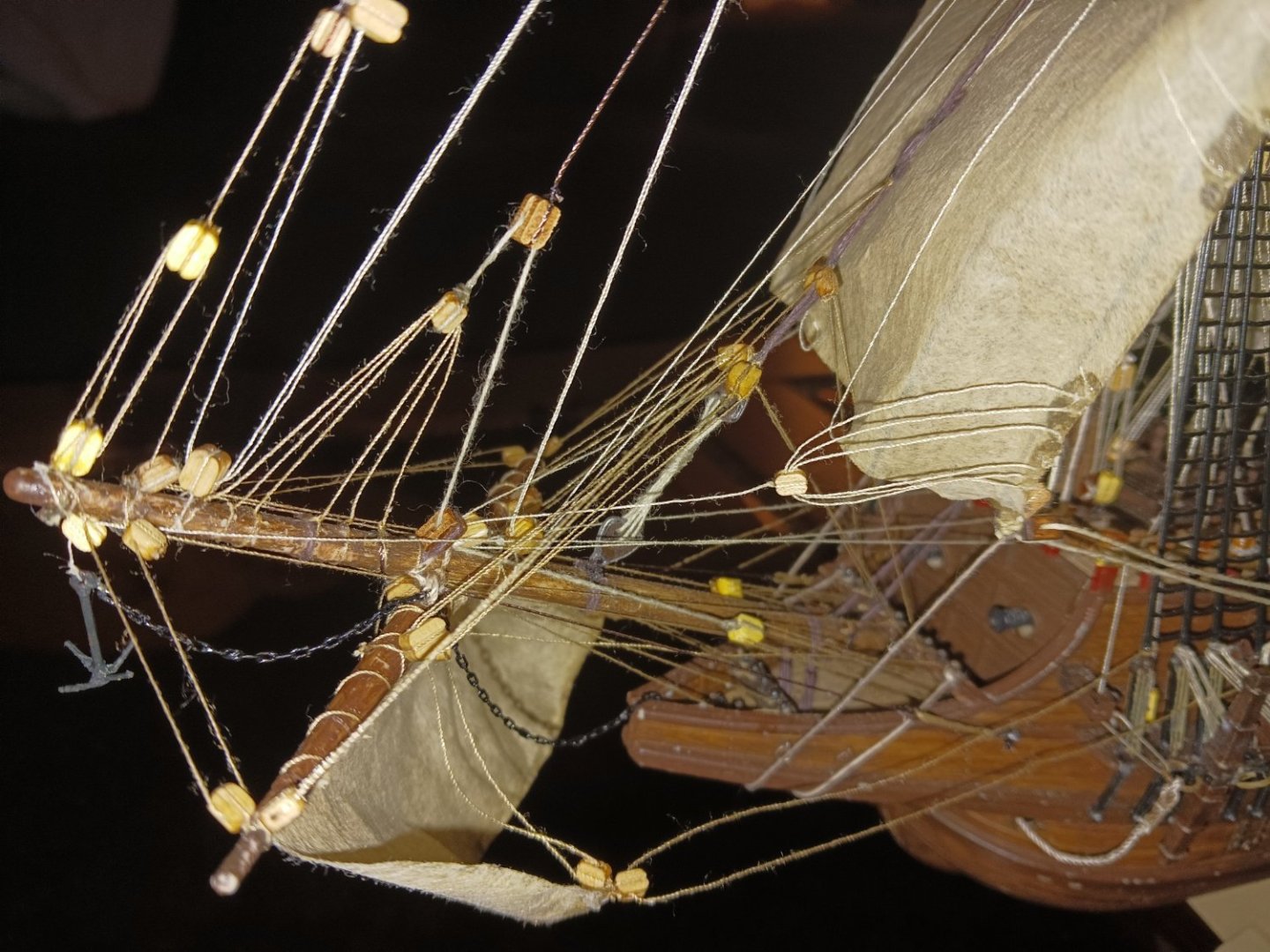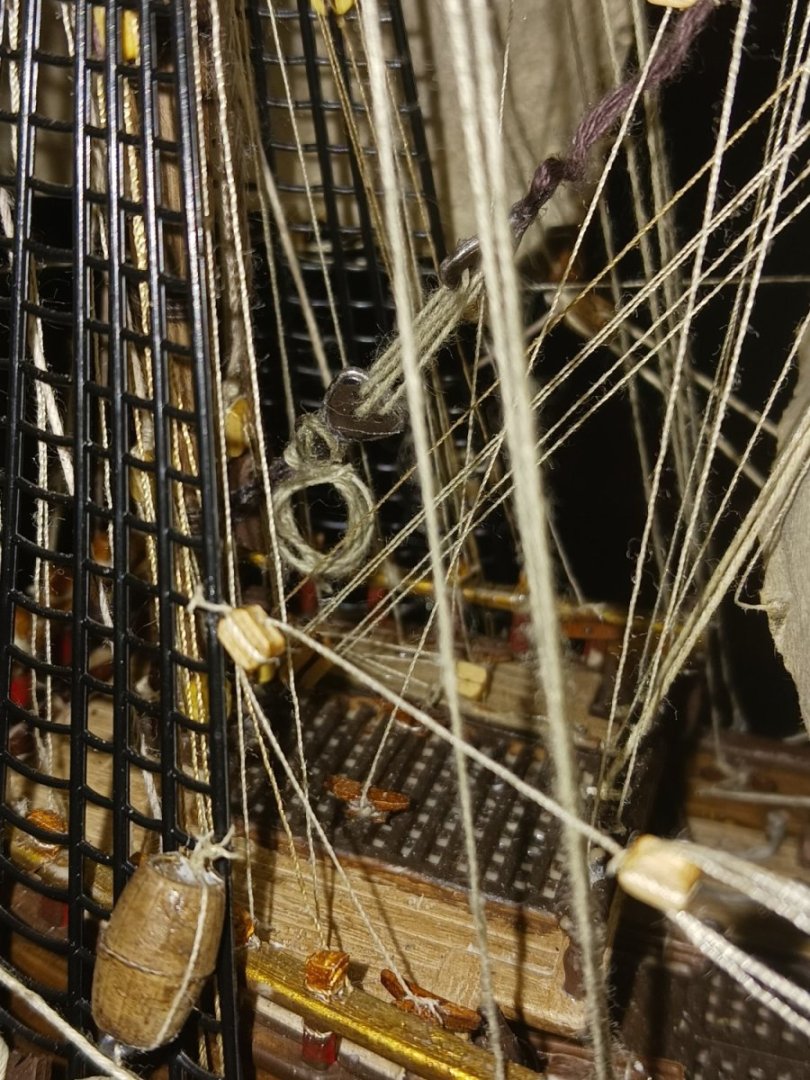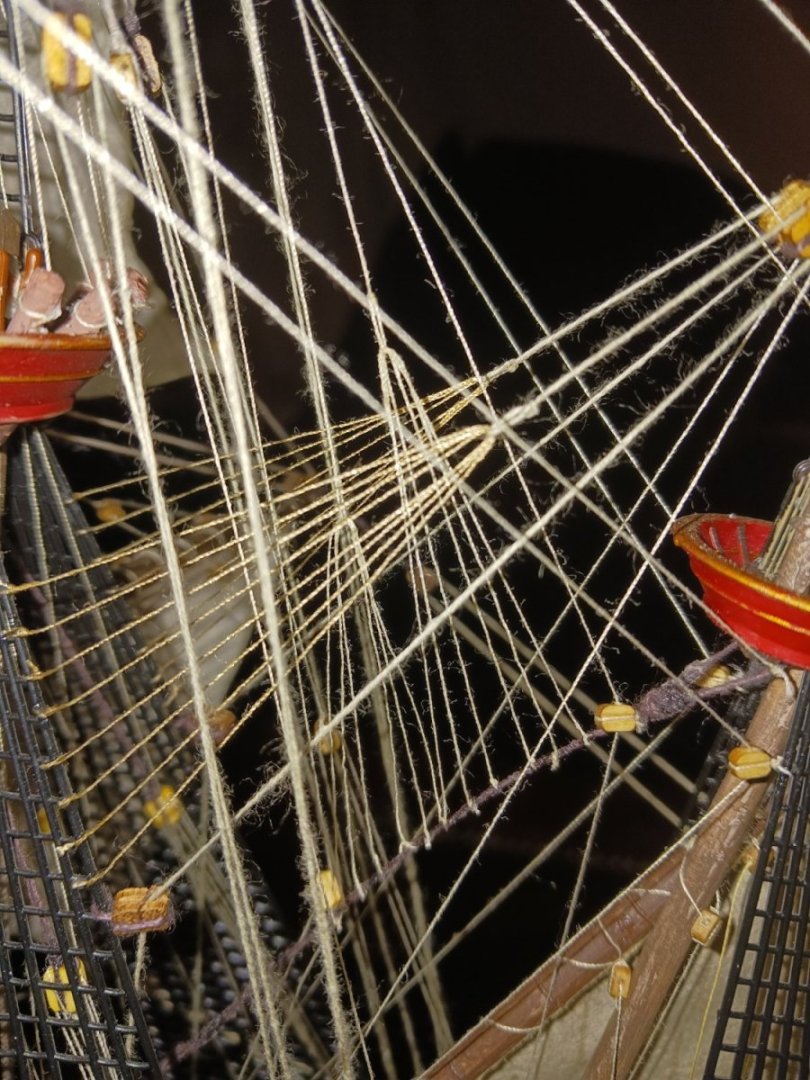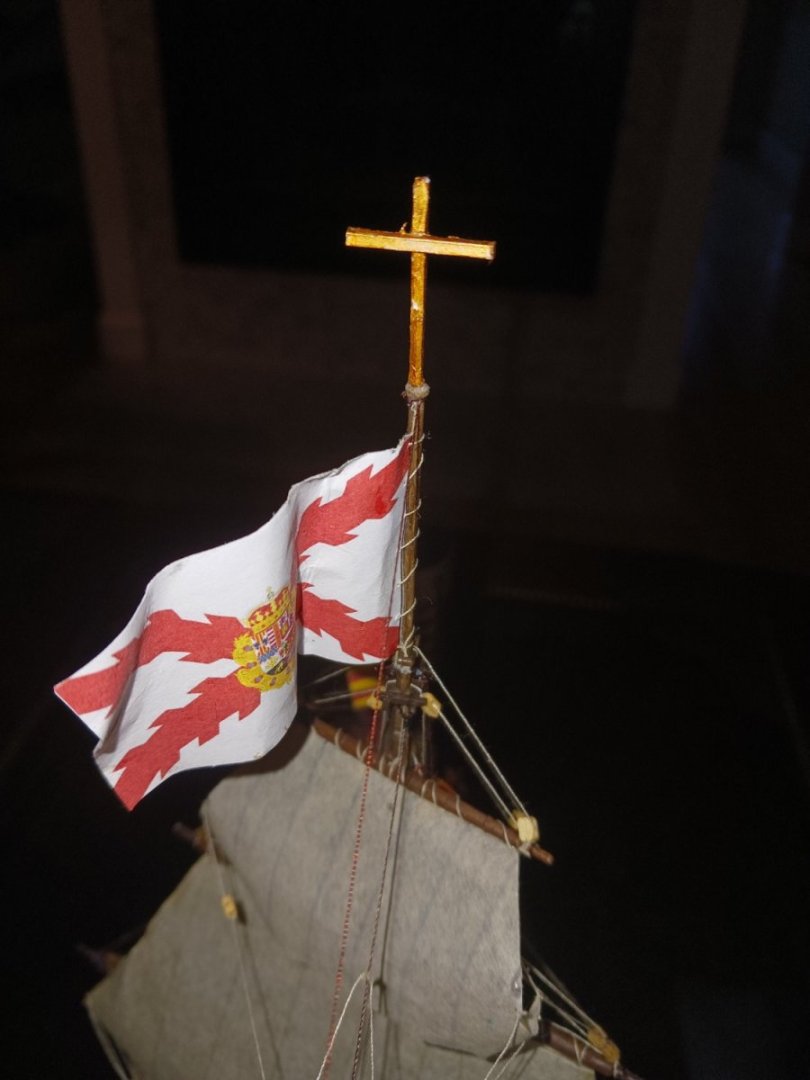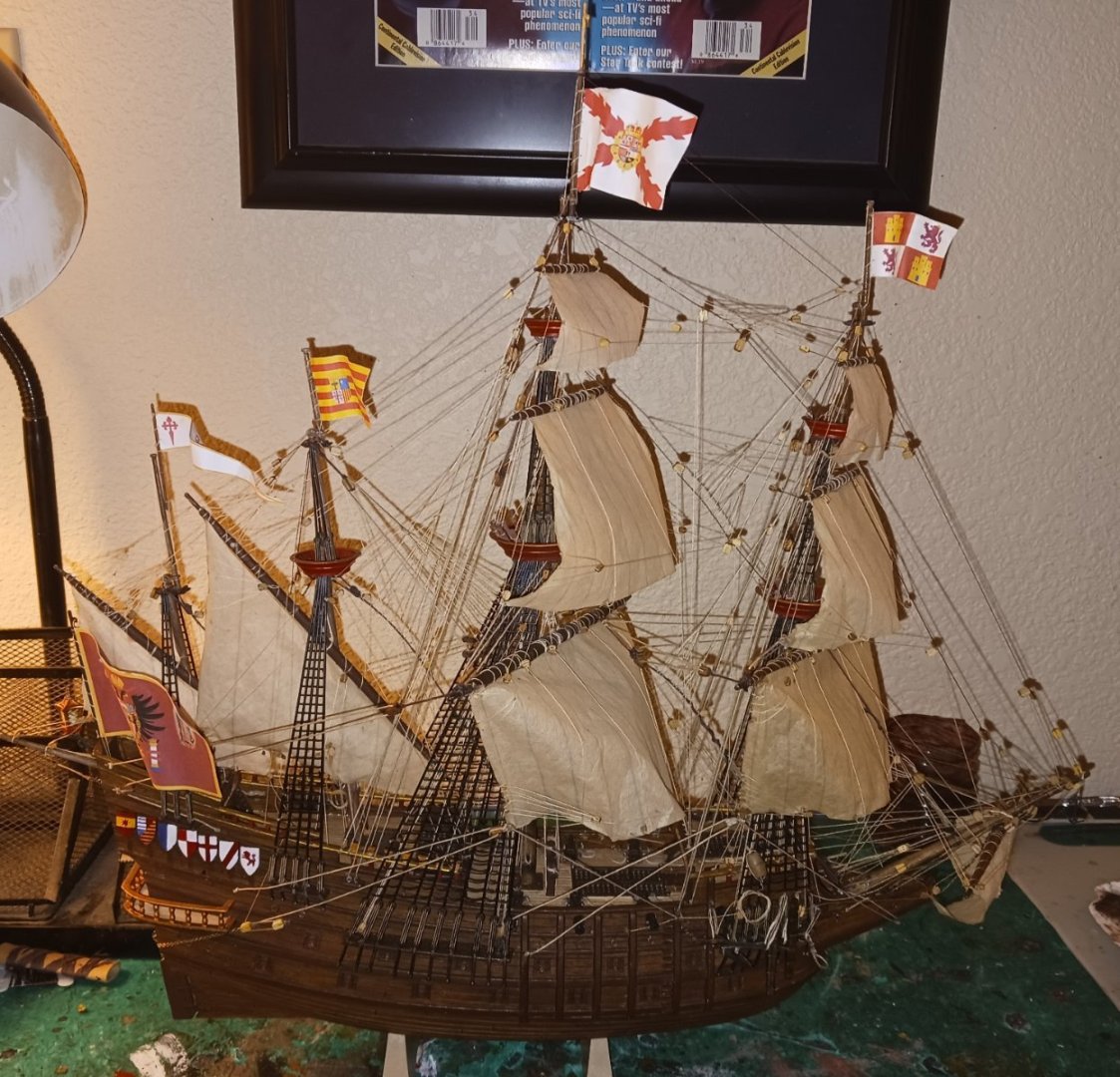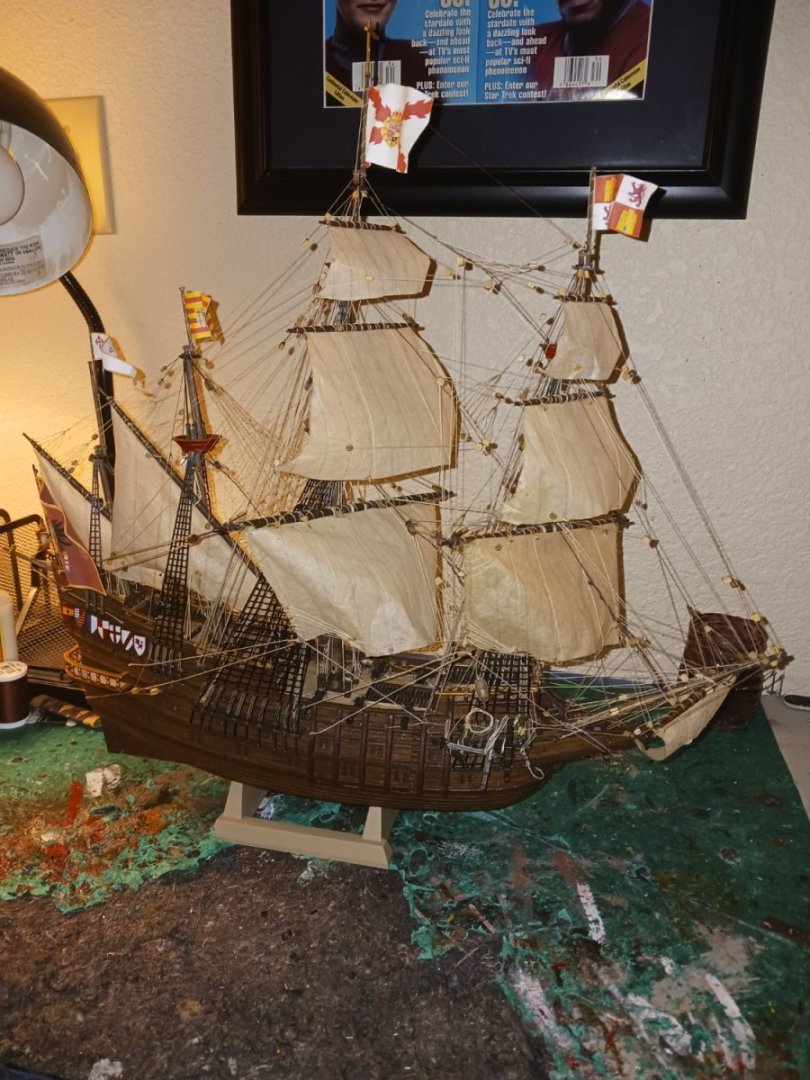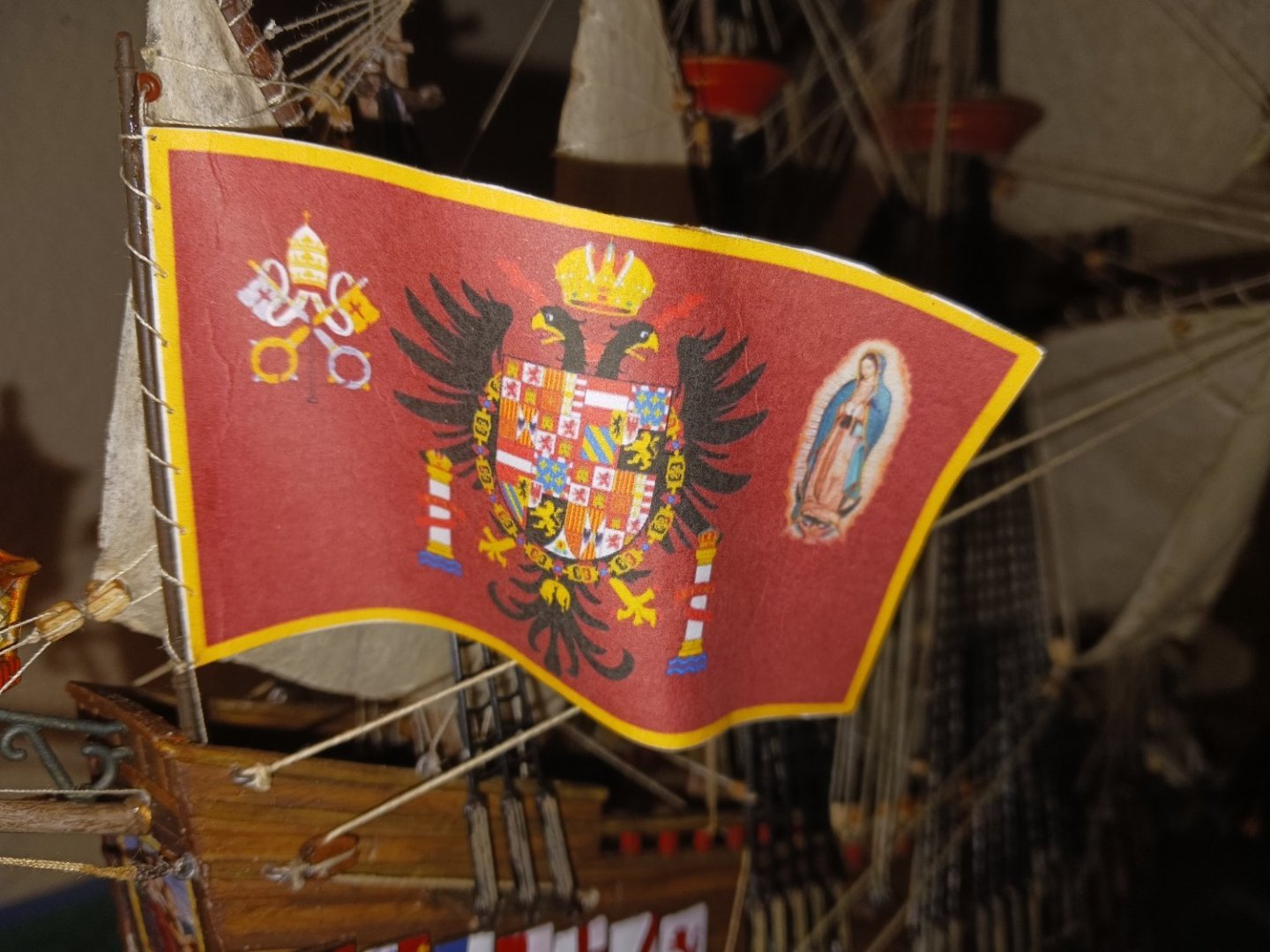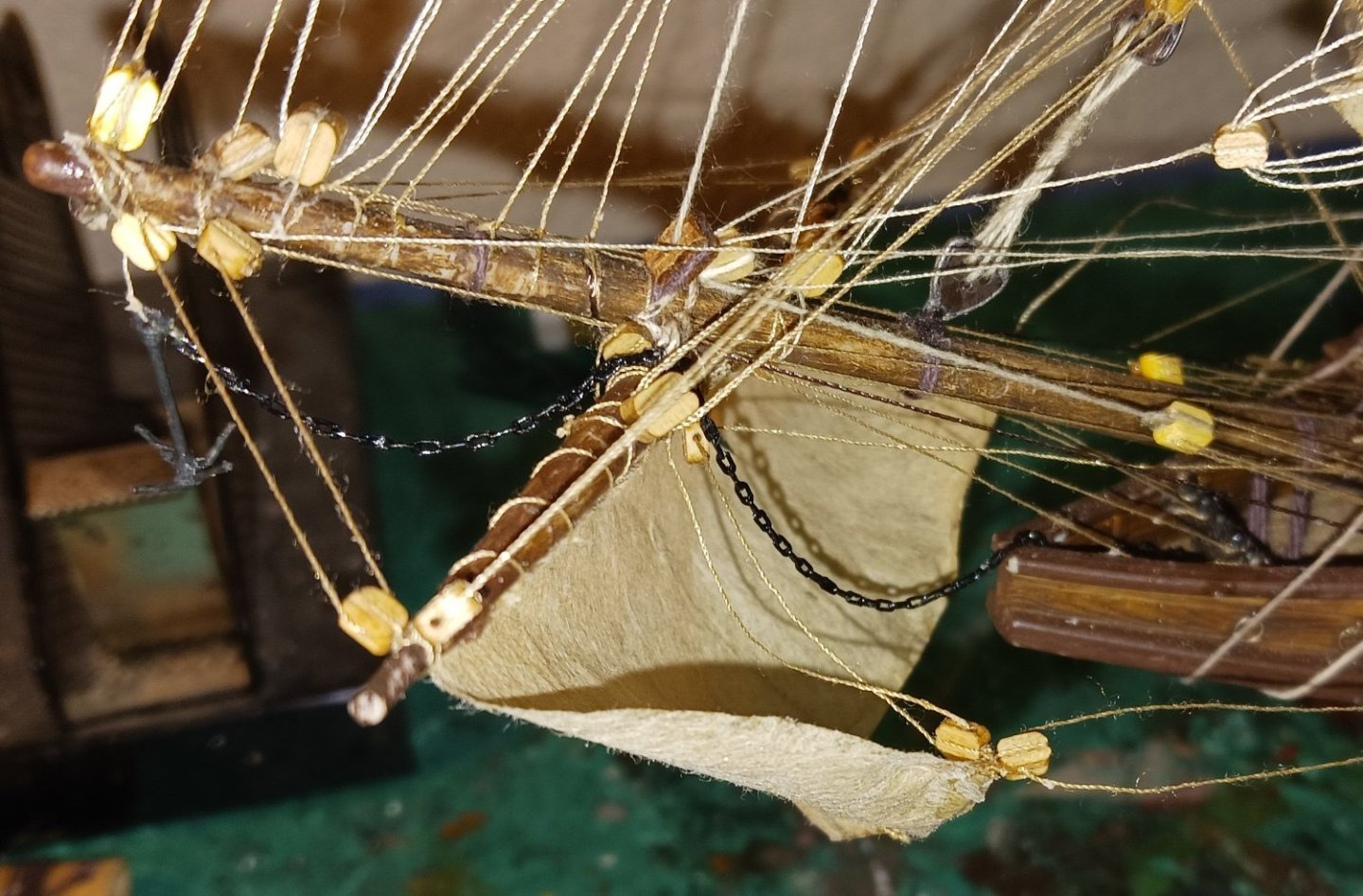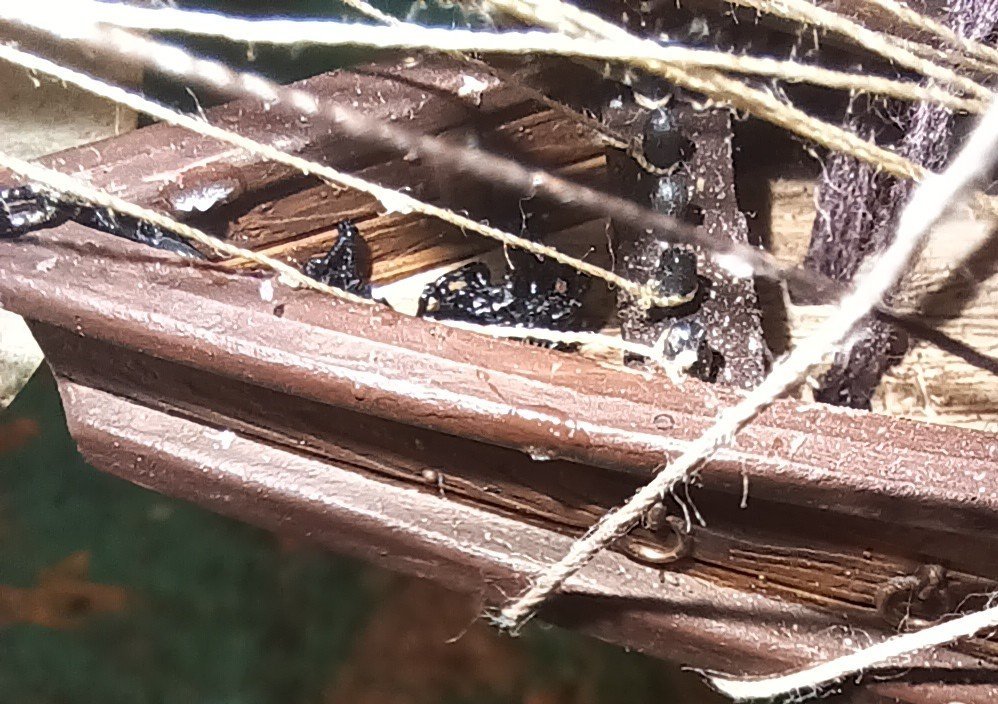-
Posts
1,407 -
Joined
-
Last visited
Content Type
Profiles
Forums
Gallery
Events
Everything posted by Ferrus Manus
-
Ya know, someday, i might buy another copy of this kit and actually go full send on it. Wood decks, wood frames, wood castles, wood everything other than the hull planks.
-
Mind you, Steven, you're talking about a century later than this vessel. The Holy Ghost is a ship from the late 12th century, not late 13th. 200 years is still 200 years. However, without any concrete evidence available, i will probably find myself keeping the deck mostly intact, plus the additions of ringbolts for the removable planks, a capstan, and a piece for the halyard. I would refer you back to post #3. However, the modifications i believe i could easily do, i will at least attempt. Anyway... This is only a teeny tiny dip into the pool of scratchbuilding. Change of plans with the castles: Both of them will be in the shape of a trapezoid, not a triangle. Also, the supports will be almost, if not completely, vertical. Please do not go away. I thoroughly enjoy you and your suggestions, and it isn't my fault that some of them are simply impossible given my current constraints. I'm in college now, and i don't have the time for a major project, unfortunately. When i truly get around to starting the Senora Fielden, you will truly have the time of your life. I can likely build up the sides of the ship, however, by putting actual supports between the knees, thereby closing up the oar-holes and making their puttying easier.
-
So the bottom attachment (rope, withy, whatever) would be regularly kept loose enough to allow for sideways motion?
- 508 replies
-
It seems like a rudder would take at least two men to operate: one on the tiller, and one to continually loosen or tighten the bottom (or top?) attachment to allow the rudder to move horizontally.
- 508 replies
-
Can someone explain to me how a steering oar actually steers a vessel, and how it is operated??
- 508 replies
-
So, what do we think these holes in the ship's hull are? Are they oar holes, or are they freeing ports/scuppers? Also, another difference here. Steven elected to put the supports for his castles completely vertical in relation to the deck. I am electing to do something a little different. My supports will not be completely fused to the sides of the hull, but they will follow the outward angle of the hull. Thus, the castles will be slightly wider than the ship itself. This makes sense because the supports would be stronger if they were at least partially up against the hull. Or, i could simply shave down the sides of the supports and have them semi-attached to the hull strakes. The castles of any nef are so lightly built that the overhang wouldn't matter to the seaworthiness of the ship anyway.
-
I think what i will do is simply leave the bow and stern decorations off (obviously), put putty in the locator slots, and scribe wood grain back into that. Boom. Now we have acceptable (albeit kind of short) stem and stern posts. You know damn well I'll make it exciting. 🤣
-
Steven, is your San Marco Floating Hearse a nef, a type of Mediterranean cog, or something different?
-
The forecastle will be entirely freestanding, but the sterncastle will likely have its aft end resting on the top of the sternpost. Either way, both castles will be freestanding on the supports in the hull. It will look something like this: The ship will not look like this in any way. However, you can see how the sterncastle rests up against the sternpost. On my nef, the aft end of the (likely triangular) castle will rest on top of the relatively low sternpost.
-
I will likely have to keep the mast step, because i don't know how to remove it and keep the deck salvageable. If i can find a way, i could probably get it gone.
-
"The Spaniard came in sight, with his huge sea-castles heaving upon the weather bow... And up-shadowing high above us with her yawning tiers of guns, took the breath from our sails... And we stayed." -Alfred Lord Tennyson From the Armada to Gibraltar, the Azores to Antwerp, the Spanish Galleon has always been a breathtaking and terrifying sight. With her yawning tiers of guns, she was the absolute pinnacle of an entire class of ship, built on the backs of plundered silver and blood. Tennyson puts it perfectly in his poem. Simply nothing could assail the Sea-Castle, so they stayed. It was not any kind of inadequacy that brought her downfall, but rather the arrogant hubris of her commanders. The ~1000 ton Esmeralda would have taken hundreds of men over two years to build, and would have been one of the largest ships in Europe at the time. However, the model of which only took one man six months. Thank you all for sticking around to see the glorious Esmeralda come to completion. She shall sail the imaginary high seas as a glorious and unassailable sea-fortress, carrying victory to her homeland for Gold, Glory, and God. My next build, the Beowulf, is currently up in the pre-1500 builds. Until next time (right now), fair winds and calm seas.
- 279 replies
-
- Spanish Galleon
- Imai
-
(and 1 more)
Tagged with:
-
Just for clarification, I am very well aware that a nef and a longship are two distinctly different designs, and the deck of a longship was likely very different to the deck of a nef. I am well aware that the organic curves and flowing lines that defined longships were likely not present on nefs. However, we have never recovered an intact nef, and they remain by far the most under-researched ship type of the Middle Ages. I am not claiming any form of historical accuracy on this build. I know that this is a departure from the norm for me. However, I am looking for a calm, interesting yet not time intensive "palate cleanser" while i get settled into online college. This vessel should not be seen as true to life or a historically accurate reconstruction, or really anything more than a fun proof of concept. It's kind of like the Mataro Nave in a way: meant to be viewed by church parishioners, not experts. Let the build commence! (Thank you Steven for being willing to help me)
-
look for it in the pre-1500 kit logs! I look forward to your presence, as i always do. Cheers!
- 508 replies
-
Hey Steven, i'm building what will likely turn into a nef. Just letting you know, because i know you're really into ships from the High Middle Ages. I will likely also need your help.
- 508 replies
-
I also had a really good idea for a major change to the ship, while writing the first post. This ship is to be built for display in a church. So, i could change the ship relatively easily to a more "Christian" design: a Nef. I have always wanted to build a nef, and i also always wanted to considerably modify a plastic kit with card. This provides a challenge that the base kit would not do, and all it would take would be the addition of two relatively identical platforms (castles) at the fore and aft.
-
I'm sure you have heard of this kit before, as it is pretty common. This is the Revell 1/50 Viking Ship, intended to be loosely based on the Gokstad ship. However, my copy of this model is a lot more special than the ordinary thing, because it has a great backstory. You see, the pastor of my church and personal friend, David (The recipient of the racing yacht David Lewandowski) went to Poland on a mission trip there, to aid the Ukrainian refugees. While he was there, he and his family did some buying of souvenirs from Poland, for various people. And, well, he came across a 1/50 viking ship kit. Suffice to say, i was absolutely thrilled that he thought to grab it. The box was kind of beat up, but the kit itself was intact. As you probably know, we're going to do a little "sprucing up" of the base model. Thus begins the build log.
-
One thing i love about Hendrik Cornelisz Vroom is that instead of putting his signature at the bottom corner like every other painter, he, a lot of times, planted his name smack in the middle of the nearest Dutch flag. They're like finding the hidden N's in Kinkade paintings.
- 279 replies
-
- Spanish Galleon
- Imai
-
(and 1 more)
Tagged with:
-
- 279 replies
-
- Spanish Galleon
- Imai
-
(and 1 more)
Tagged with:
-
- 279 replies
-
- Spanish Galleon
- Imai
-
(and 1 more)
Tagged with:
-
What i didn't have was any kind of chemical blackening agent. What i did have, however, was a black spray-paint specifically designed for use on metal. The tiny creases in my hands are still black with paint. If it sticks to my hands, it'll sure stick to the chain. Anyway, the Esmeralda now has a boarding anchor. Is there anything else you guys can see me putting on the ship? I kind of feel like putting my sentimental "first figure" on the ship, but i probably won't. Instead, i'll keep him on my modelling table.
- 279 replies
-
- Spanish Galleon
- Imai
-
(and 1 more)
Tagged with:
-
If i understand correctly, your bewilderment comes at the fact that none of the models you've seen feature the grating/slats in the quarterdeck bulkhead? Because that's basically the only aspect of the steering setup that would be visible from outside.
-
Thank you. I see the grating by which the captain and pilot would communicate. This is standard for carracks and galleons throughout the period of the whipstaff.
-
Cacafuego was a Nuestra Senora. Her full name was Nuestra Senora de la Immaculada Concepcion. Captured by Drake with the Golden Hinde.
- 279 replies
-
- Spanish Galleon
- Imai
-
(and 1 more)
Tagged with:
About us
Modelshipworld - Advancing Ship Modeling through Research
SSL Secured
Your security is important for us so this Website is SSL-Secured
NRG Mailing Address
Nautical Research Guild
237 South Lincoln Street
Westmont IL, 60559-1917
Model Ship World ® and the MSW logo are Registered Trademarks, and belong to the Nautical Research Guild (United States Patent and Trademark Office: No. 6,929,264 & No. 6,929,274, registered Dec. 20, 2022)
Helpful Links
About the NRG
If you enjoy building ship models that are historically accurate as well as beautiful, then The Nautical Research Guild (NRG) is just right for you.
The Guild is a non-profit educational organization whose mission is to “Advance Ship Modeling Through Research”. We provide support to our members in their efforts to raise the quality of their model ships.
The Nautical Research Guild has published our world-renowned quarterly magazine, The Nautical Research Journal, since 1955. The pages of the Journal are full of articles by accomplished ship modelers who show you how they create those exquisite details on their models, and by maritime historians who show you the correct details to build. The Journal is available in both print and digital editions. Go to the NRG web site (www.thenrg.org) to download a complimentary digital copy of the Journal. The NRG also publishes plan sets, books and compilations of back issues of the Journal and the former Ships in Scale and Model Ship Builder magazines.


